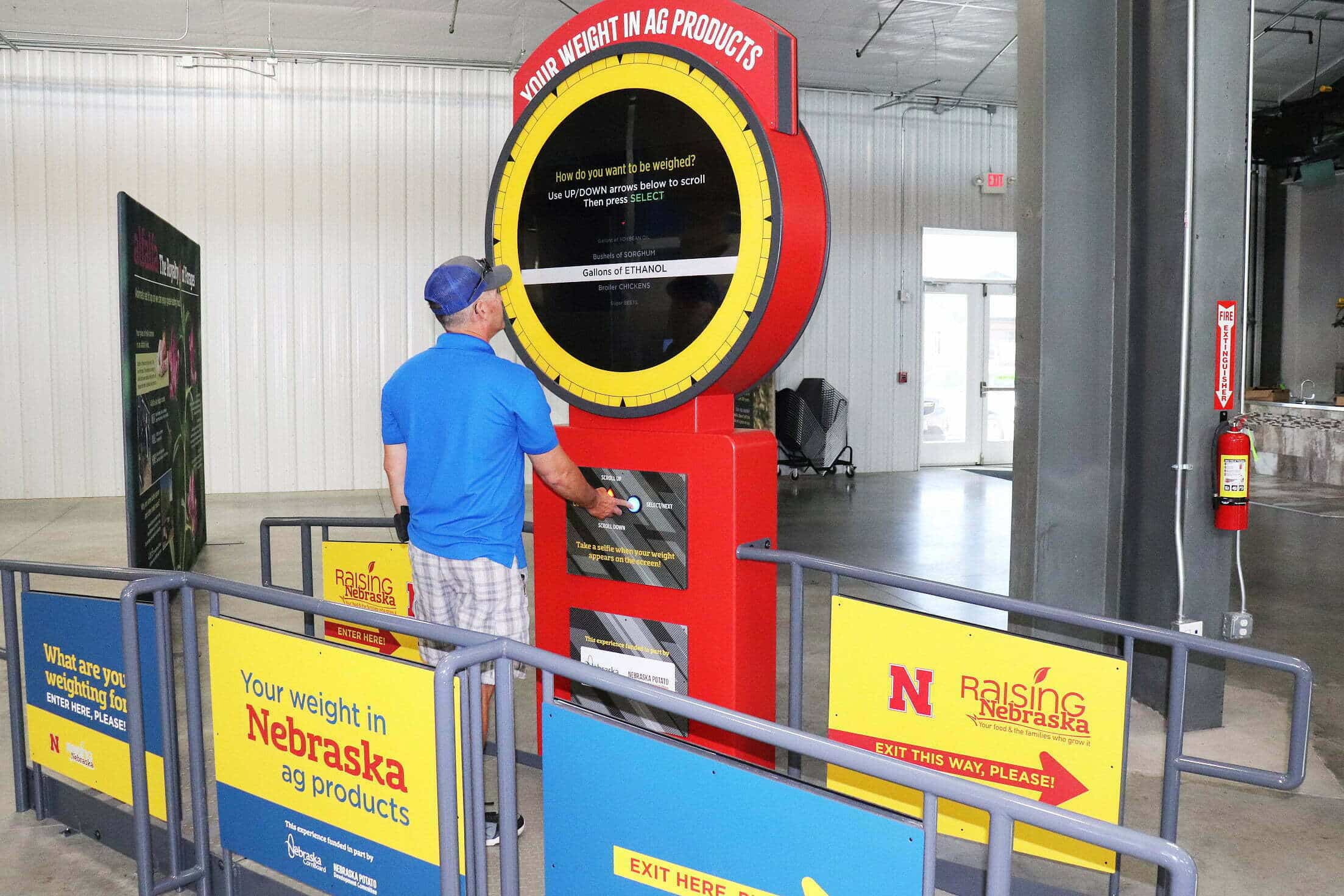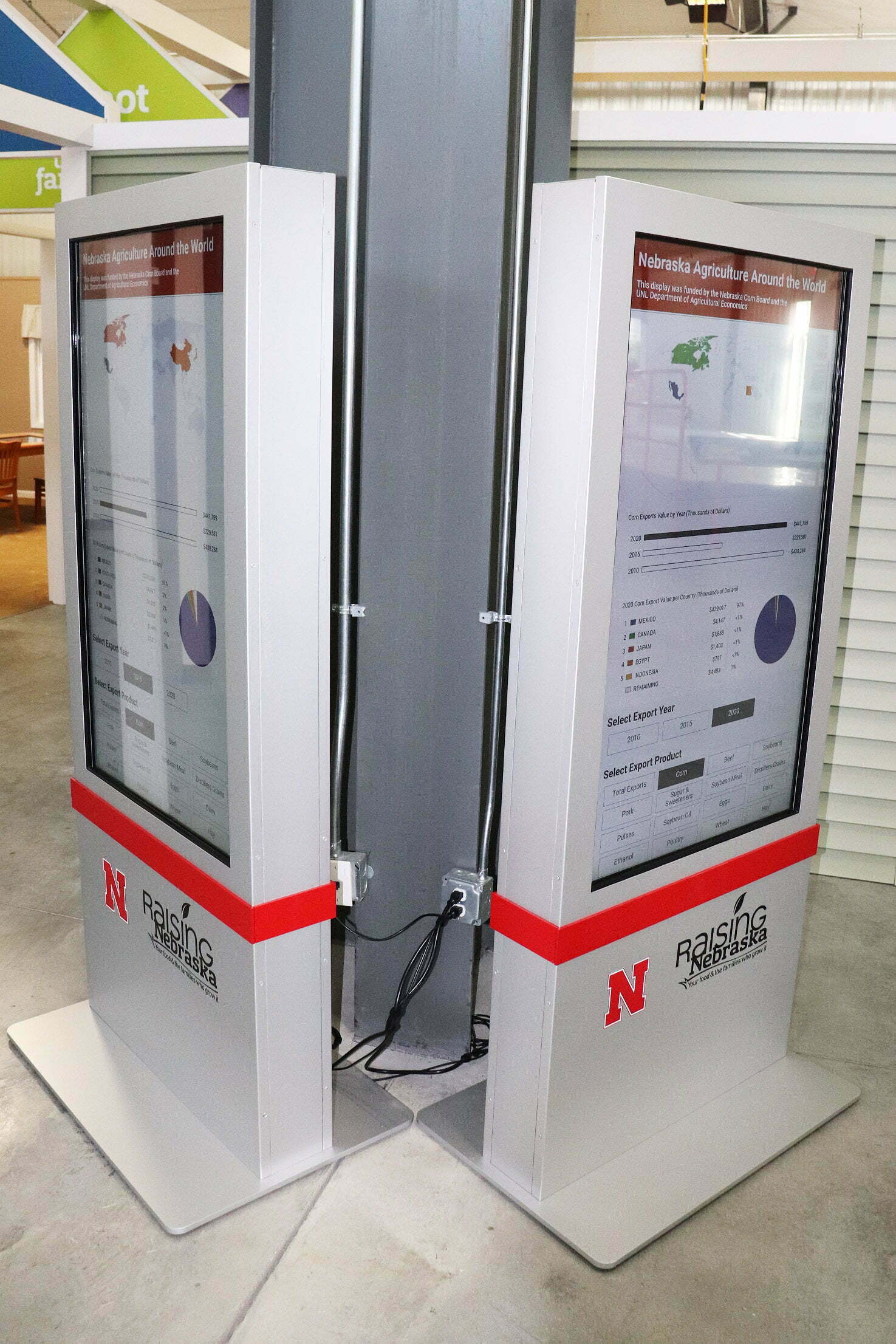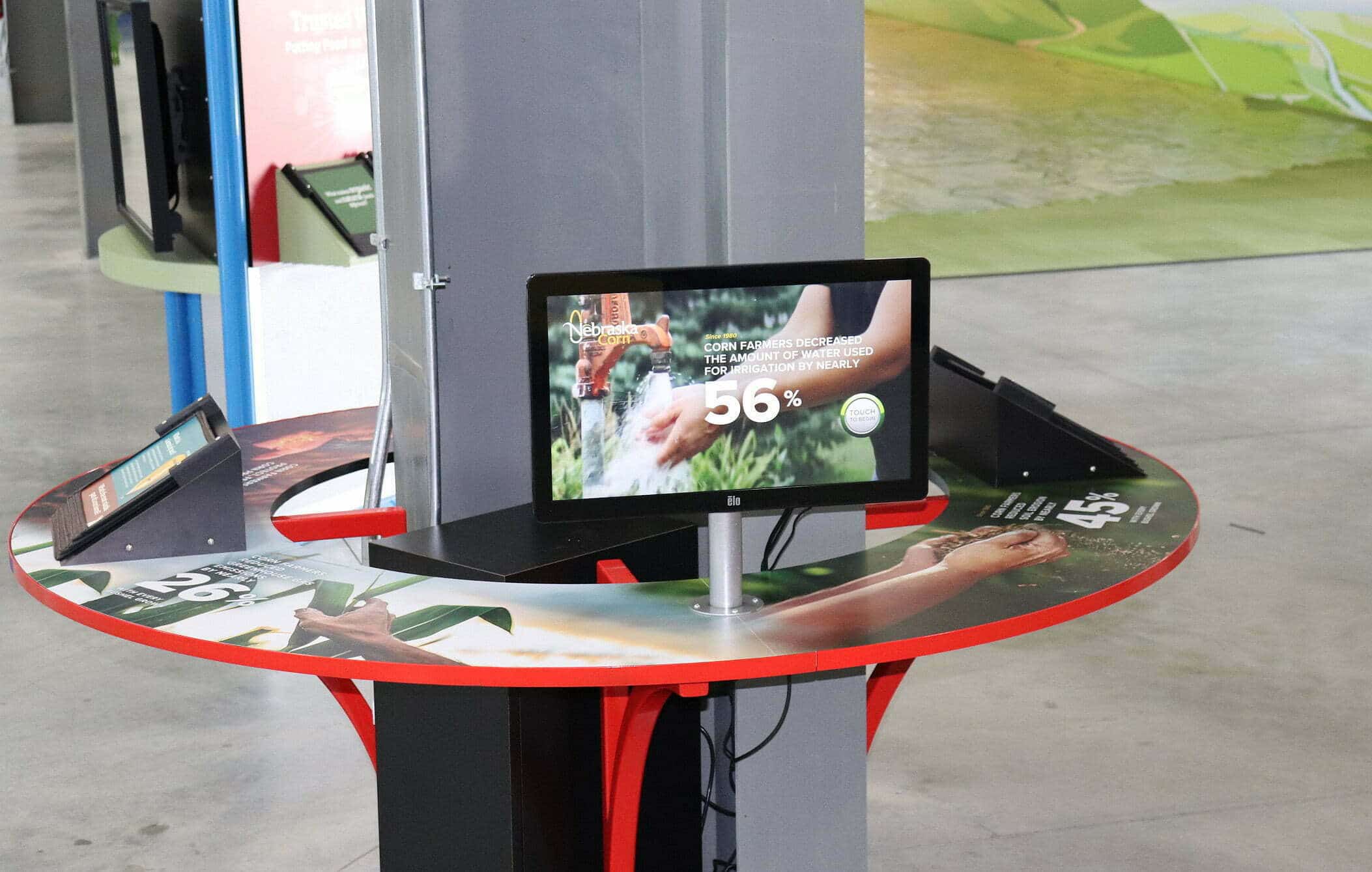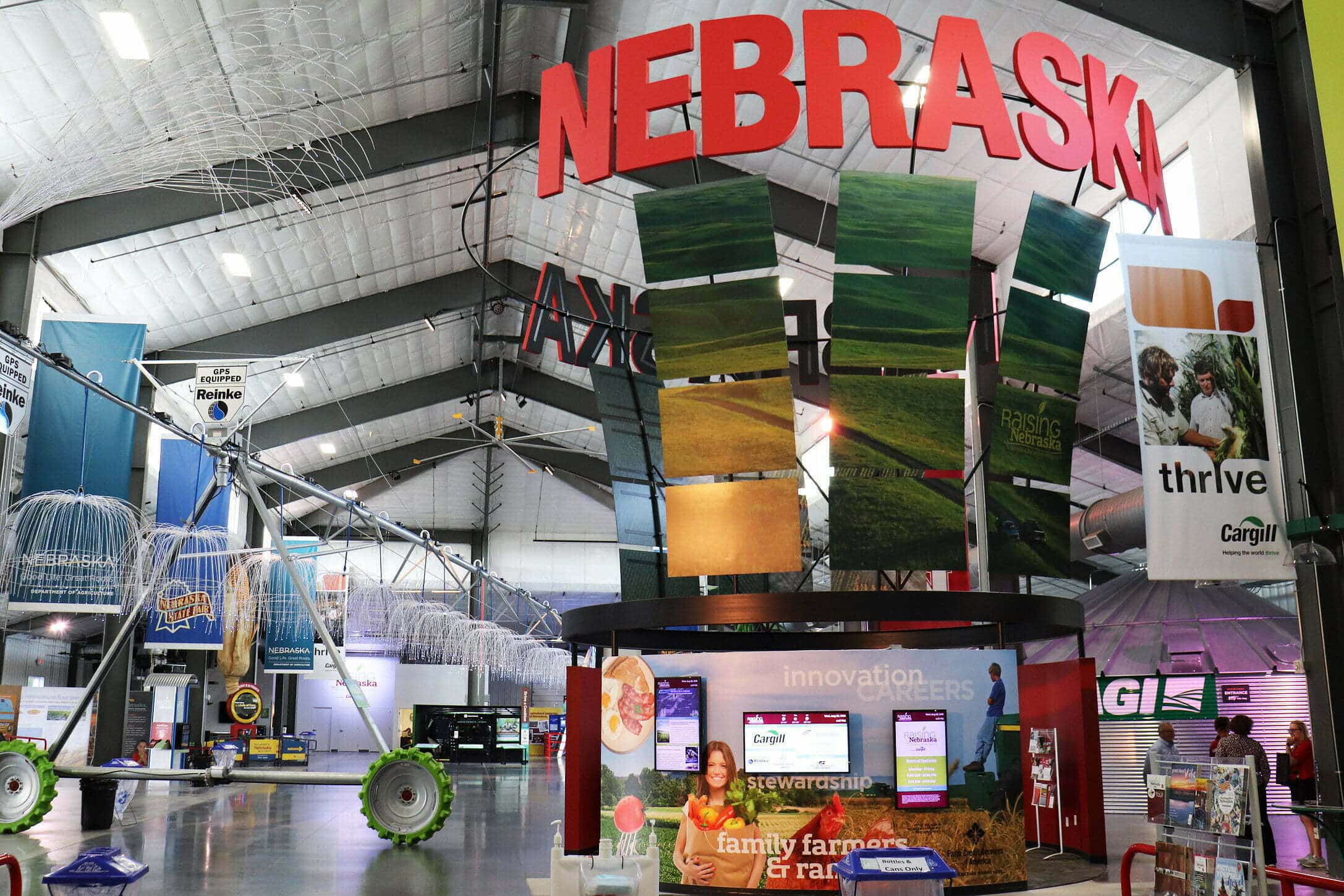
“How Many Bushels do you Weigh?” is just one of several new exhibits for people to see at Raising Nebraska. Through this display, visitors can weigh themselves using agricultural commodities as the unit of mass.
New additions to the Raising Nebraska exhibit space – located in Grand Island’s Fonner Park – have been installed just in time for the Aug. 27 kickoff of the Nebraska State Fair. Some of these interactive displays were supported by the Nebraska Corn Board (NCB) to help visitors better understand the state’s agricultural industry and where their food comes from, a key pillar of the mission of the corn checkoff. Since 2014, NCB has been an active partner with Raising Nebraska, which is a collaboration of commodity and industry groups, the University of Nebraska-Lincoln and the Nebraska Department of Agriculture.
“A common problem within all of agriculture is often our failure to tell our story and connect with consumers,” said Jay Reiners, chairman of NCB and farmer from Juniata. “Several years ago, when Raising Nebraska was just a concept, we saw the potential an exhibit of this magnitude could have. Not only could we reach the thousands of attendees coming to the Nebraska State Fair, but this would also be a learning space for people of all ages year-round.”
Since its inception, partners of Raising Nebraska, like NCB, were challenged to keep the space updated with new interactive displays and attractions. Through continual improvements, visitors are inclined to return to the exhibit to learn new information about Nebraska agriculture. This year, NCB provided funding for three additional learning stations which are now available for visitors.

Nebraska commodities are exported around the world. To help visitors of Raising Nebraska better understand agriculture’s global nature, the “Ag Economics Experience” was recently installed to show where the state’s agricultural products are exported and how this has changed over time.
“How Many Bushels do you Weigh?” is an engaging whole-body experience for visitors that helps provide some context regarding the metrics related to various agricultural commodities. Individuals or groups will stand on a large scale, select an agricultural commodity – like corn or ethanol – and will be weighed using ag-specific metrics – like bushels or gallons. While waiting for their results, participants can learn about Nebraska agriculture through fun facts displayed on the screen.
“Ag Economics Experience” helps visitors better understand the global impact, reach and value of Nebraska’s agricultural products. Touchscreens have been installed that highlight the state’s agricultural commodities, show where these products are exported to and show historical trends over time. Participants are able to better understand the world of agricultural economics and how commodities are traded.
“Nebraska Corn Reading Rail” is an updated display where visitors can learn all about the state’s corn industry. Through flip books and digital touchscreens, people can hear from local farmers, understand why Nebraska is well-suited for corn production and examine the numerous uses for corn. Infographics focused on sustainability cover the surface of the display, which were developed through an educational initiative of the National Corn Growers Association.

Nebraska has long been known as the “Cornhusker State,” and visitors to Raising Nebraska will now understand why. Through the “Nebraska Corn Reading Rail,” people can learn all about the state’s corn production and the many uses of the versatile crop.
“The best thing about Raising Nebraska is its collaborative approach,” said Reiners. “Not only can people experience corn production, but they can also learn about other topics like livestock, soil health and farming practices. Hopefully, all of these themes combined will help people better understand their connection to agriculture.”
The Nebraska State Fair runs Aug. 27 through Sept. 6. However, the Raising Nebraska exhibit is open throughout the year. Visit RaisingNebraska.net for more information.
Related Articles
Join the Nebraska Corn Board and Nebraska Corn Growers Association at Husker Harvest Days 2025
The Nebraska Corn Board (NCB) and the Nebraska Corn Growers Association (NeCGA) are set to welcome visitors to Grand Island, Nebraska for Husker Harvest Days, the world's largest totally irrigated working farm show, September [...]
New Appointment and Leadership Elected for the Nebraska Corn Board
New leadership was recently elected to the Nebraska Corn Board at the August meeting. (L-R), Jay Reiners, past chairman; Brandon Hunnicutt, chairman; Andy Groskopf, vice chairman; and Ted Schrock, secretary/treasurer. They assume the [...]


